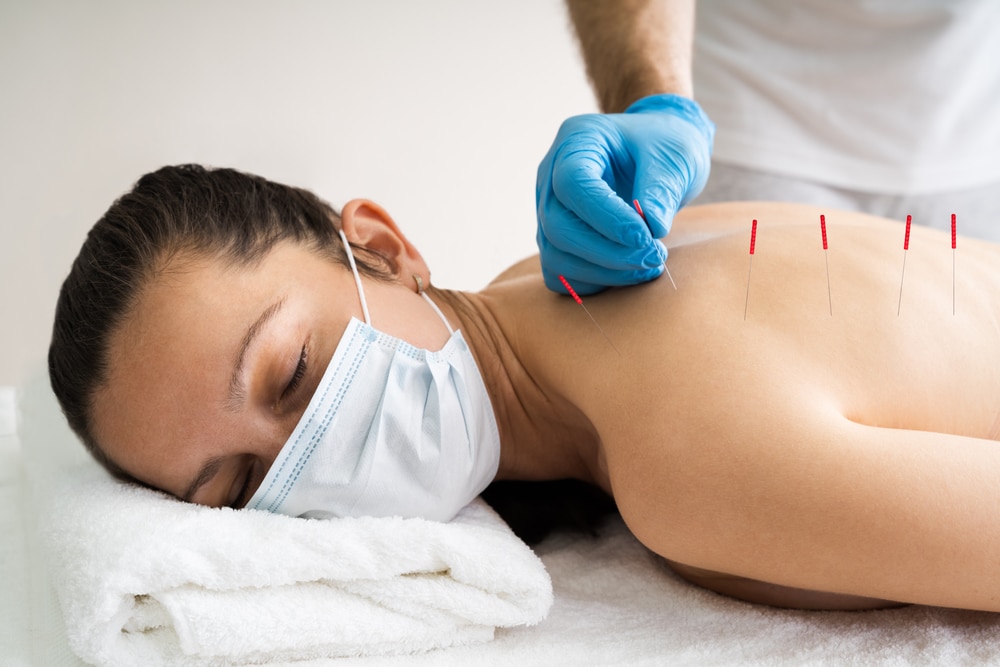
Image Source: Google
In recent years, there has been a growing interest in alternative therapies for pain management that focus on holistic approaches to healing. One such treatment gaining popularity is dry needling, a technique that involves inserting thin needles into specific points on the body to alleviate pain and improve overall well-being. To get more details about dry needling treatment, you can contact Red Crane Wellness.
The Basics of Dry Needling
Dry needling is a technique used by trained healthcare professionals, such as physical therapists and chiropractors, to treat musculoskeletal pain and dysfunction. Unlike acupuncture, which is rooted in traditional Chinese medicine and aims to rebalance the body's energy flow, dry needling is based on Western anatomical and neurophysiological principles.
How Dry Needling Works
- Thin needles are inserted into trigger points or tight bands of muscle to create a localized twitch response.
- This twitch response helps release muscle tension, improve blood flow, and reduce pain signals sent to the brain.
- By targeting specific areas of muscle tightness, dry needling can help restore normal function and range of motion.
Conditions Treated with Dry Needling
- Chronic pain conditions such as lower back pain, neck pain, and headaches
- Muscle strains, ligament sprains, and tendonitis
- Joint pain and restricted range of motion
The Healing Benefits of Dry Needling
There are several key benefits to incorporating dry needling into a holistic approach to pain management:
Pain Relief
- Dry needling can help reduce muscle tension and alleviate pain by targeting trigger points directly.
- It can be an effective treatment for chronic pain conditions that have not responded well to other interventions.
Improved Range of Motion
- By releasing muscle tightness and improving blood flow, dry needling can help restore normal movement patterns and flexibility.
- Patients often experience an increase in range of motion and reduced stiffness after dry needling sessions.
Enhanced Healing Response
- The localized twitch response triggered by dry needling promotes the release of endorphins, the body's natural painkillers.
- This can help accelerate the healing process and reduce inflammation in the targeted area.
What to Expect During a Dry Needling Session
If you are considering trying dry needling as a pain management technique, here is what you can expect during a typical session:
Evaluation
- Your healthcare provider will conduct a thorough evaluation of your musculoskeletal system to identify trigger points and areas of muscle tightness.
Treatment
- Thin needles will be inserted into the identified trigger points, which may cause a slight discomfort or muscle twitching sensation.
- The number of needles used and the duration of the session will depend on your specific condition and treatment goals.
Post-Treatment Care
- Your provider may recommend gentle stretching exercises, heat or ice therapy, and rest to optimize the effects of dry needling.
- It is common to experience mild soreness or bruising at the needle insertion sites, which should resolve within a few days.
Is Dry Needling Right for You?
Dry needling can be a valuable tool in managing chronic pain and improving musculoskeletal function, but it may not be suitable for everyone. Consider the following factors when deciding if dry needling is right for you:
Medical History
- Inform your healthcare provider about any medical conditions, allergies, or medications you are taking before undergoing dry needling.
Expectations
- Have realistic expectations about the outcomes of dry needling and be open to discussing your goals with your provider.
Communication
- Open communication with your provider is key to a successful dry-needling experience. Be sure to voice any concerns or discomfort during the session.
Overall, dry needling can be a safe and effective treatment for managing pain and improving musculoskeletal function when performed by a qualified healthcare professional. By incorporating this holistic approach into your pain management plan, you may experience lasting relief and enhanced well-being.